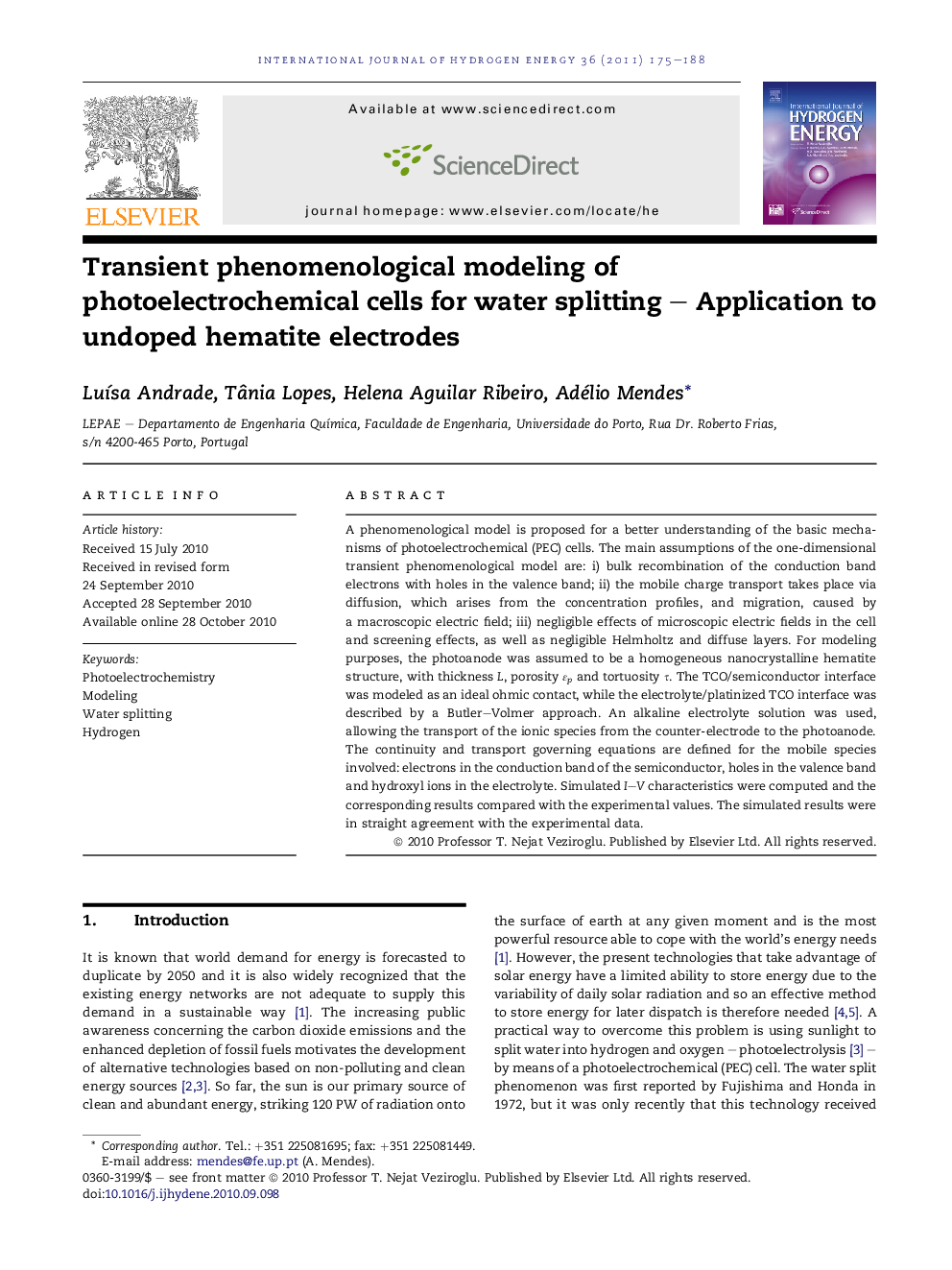| Article ID | Journal | Published Year | Pages | File Type |
|---|---|---|---|---|
| 1277765 | International Journal of Hydrogen Energy | 2011 | 14 Pages |
A phenomenological model is proposed for a better understanding of the basic mechanisms of photoelectrochemical (PEC) cells. The main assumptions of the one-dimensional transient phenomenological model are: i) bulk recombination of the conduction band electrons with holes in the valence band; ii) the mobile charge transport takes place via diffusion, which arises from the concentration profiles, and migration, caused by a macroscopic electric field; iii) negligible effects of microscopic electric fields in the cell and screening effects, as well as negligible Helmholtz and diffuse layers. For modeling purposes, the photoanode was assumed to be a homogeneous nanocrystalline hematite structure, with thickness L, porosity ɛp and tortuosity τ. The TCO/semiconductor interface was modeled as an ideal ohmic contact, while the electrolyte/platinized TCO interface was described by a Butler–Volmer approach. An alkaline electrolyte solution was used, allowing the transport of the ionic species from the counter-electrode to the photoanode. The continuity and transport governing equations are defined for the mobile species involved: electrons in the conduction band of the semiconductor, holes in the valence band and hydroxyl ions in the electrolyte. Simulated I–V characteristics were computed and the corresponding results compared with the experimental values. The simulated results were in straight agreement with the experimental data.
